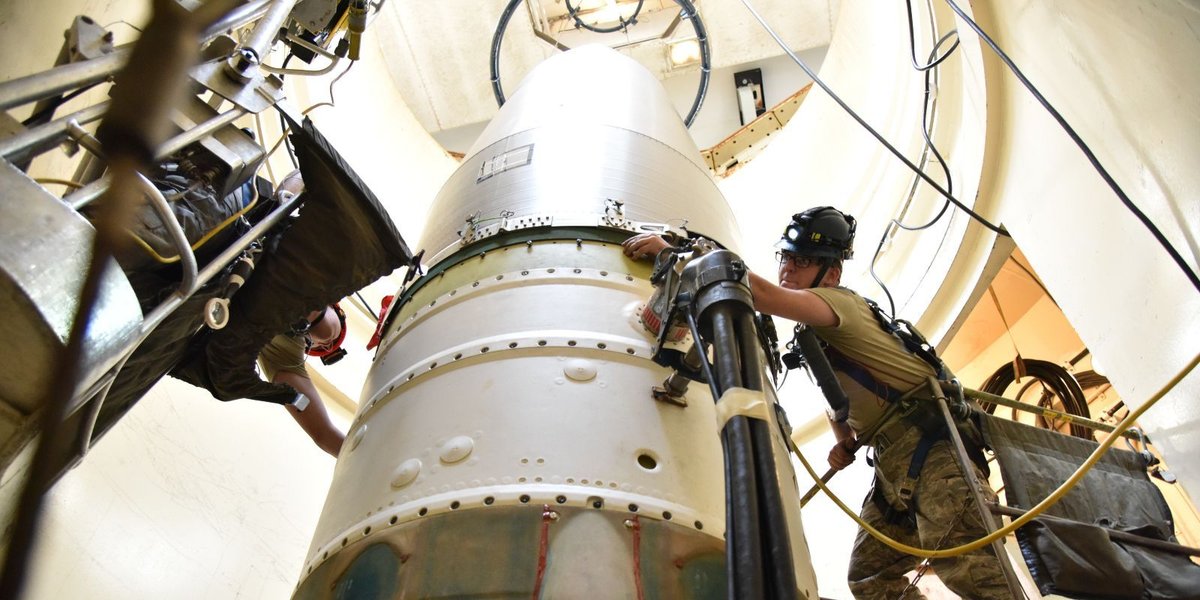MALMSTROM AFB PCB LEVELS RAISE CANCER RISK FOR MISSILEERS

No one is denying that serving in the military comes with a plethora of risks. Unfortunately, new discoveries are presenting findings that are concerning for the military community with ties to the Malmstrom Air Force Base in Montana. This is because elevated levels of chemicals known to cause cancer with the right amount of exposure have been found. However, Malmstrom AFB cancer concerns don’t just start and end with those who served. They also extend to that service member’s family as well.
Related read: Officer Candidate School Graduations Now Being Live Streamed
Malmstrom AFB PCB Contamination: Validation of Cancer Claims
A disturbing find is showing that Malmstrom AFB cancer risks were likely present for those serving. This came as a probable carcinogen was found at underground launch control centers at the base.
Many people that have served in a Montana nuclear missile base have reported being diagnosed with cancer. The new discovery is prompting a new cleanup as a response.
The Air Force's Global Strike Command believes that the study is the first comprehensive sampling of active U.S. intercontinental ballistic missile bases with regard to cancer concerns raised by missile community members.
Elevated levels of polychlorinated biphenyls (PCBs) were identified in two launch facilities at Malmstrom Air Force Base in Montana. The PCB levels were found to surpass Environmental Protection Agency thresholds for safety.
Following a military briefing revealing Malmstrom Air Force Base cancer diagnoses from those who held the position of Missileer, a study from the Air Force School of Aerospace Medicine began looking for disease clusters for a greater understanding of the issues.
The Torchlight Initiative has reported self-diagnoses of cancer, but there are several other health issues being brought to light. These include blood diseases, and other illnesses by at least 268 troops who served at nuclear missile sites or their surviving family members over the past decades.
Suggested read: Renaming Military Bases in 2023 Is a Focus of Naming Commission
PCBs Exposure for Those Serving as a Missileer
PCBs are manmade chemicals, oily liquids, or solids without smell or taste, known for their stability under extreme conditions. Initially widely used in electrical equipment and various products, the production of PCBs was banned in 1979 due to health concerns.
Polychlorinated biphenyls are pervasive in the environment, entering the body through food, air, or skin contact, accumulating in fatty tissues, and persisting globally in air, water, soil, and sediments. However, whereas everyday people may be exposed in more moderate forms, the study for Missileers is more worrisome.
To start, since July 23, 1962, Malmstrom AFB has been home to nuclear missiles. While the Cold War may be over, the military instillation still plays a critical role in national security and world peace.
There are several functions of Malmstrom AFB, but there is no denying that it's central to our nation’s nuclear program. This includes both the ability to launch missiles and bombers capable of starting World War III and defending against incoming threats as well.
Minuteman III ICBMs are unfortunately essential tools in the arsenal, and yet with elevated PCB levels on a base known for its nuclear activity, it stands to reason that the risks of such weapons are still not fully understood all these decades later.
Malmstrom AFB PCB Levels: Potential Impact on Missileers
Amidst the small missileer community, over 217 cancer cases have been reported, including 33 instances of non-Hodgkin lymphoma, an unusually high number. By comparison, the general population sees approximately 403 new cancer cases and around 19 non-Hodgkin lymphoma cases per 100,000 people annually. There have only been 21,000 missileers in total since the beginning of the role in the 1960s.
Malmstrom AFB isn’t the only base that is home to the Minuteman III either. You can find the ICBM at F.E. Warren Air Force Base and Minot Air Force Base as well. The new findings are raising concerns for the community as a whole.
Older missile silos underground that have been around for many decades are one point of concern. This is leading to soil and water sample testing, the results of which are not yet available as of this writing.
The full extent of the Malmstrom AFB cancer study is still yet to be understood. Now, taking steps forward to minimize the threat and possibly right the wrongs of the past may be in the sights of multiple military communities.
Read next: Affected by Camp Lejeune Water Contamination? Learn Your Options
Buddy Blouin
Buddy Blouin is a Contributing Writer at VeteranLife.com
Buddy Blouin is a Contributing Writer at VeteranLife.com
SHARE:



